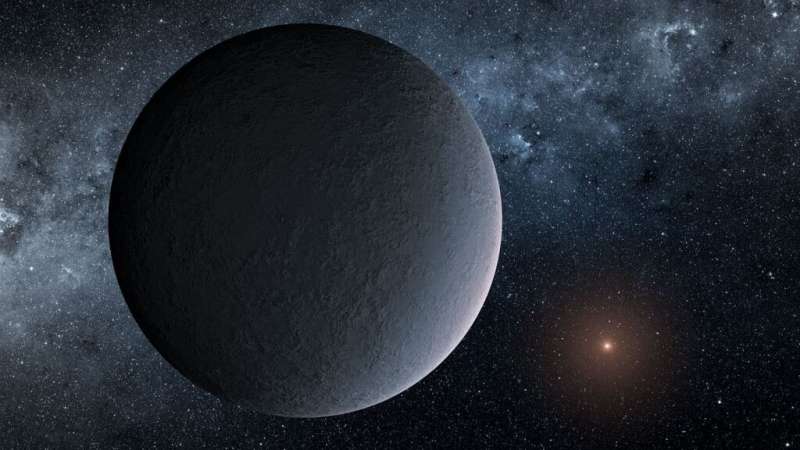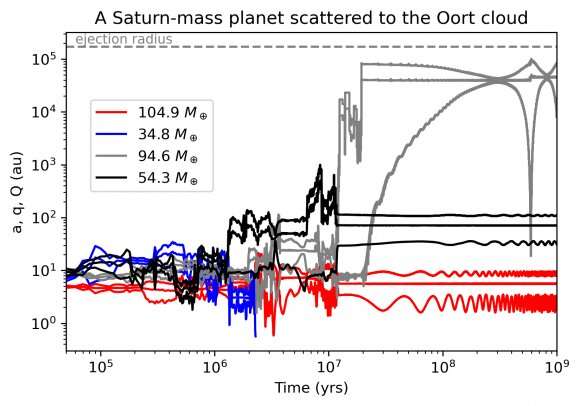This article has been reviewed according to Science X's editorial process and policies. Editors have highlighted the following attributes while ensuring the content's credibility:
fact-checked
preprint
trusted source
proofread
Paper suggests there could be captured planets in the Oort cloud

Our solar system has had a chaotic past. Earth and the other planets are now in stable orbits, but while they were forming they experienced drastic location shifts. Jupiter was likely much closer to the sun than it is now, and its shift not only shifted other planets but also cleared the solar system of debris, tossing much of it to the Oort Cloud.
The Oort Cloud is at the gravitational edge of the solar system. From time to time a chunk of icy material will get a gravitational nudge toward the inner solar system and becomes one of the many comets we see. While most of the Oort Cloud debris is likely relatively small, it's possible that there are planet-sized objects lurking out there, even more distant than the hypothetical planet X.
Some of the debris cast out of the inner solar system was probably thrown even farther. Given such speed, they escaped the sun's gravity and were set adrift in interstellar space. We know this is possible because we've had at least two cometary visitors from other star systems, Oumuamua in 2017 and Borisov in 2019. We have also observed rogue planets that have broken the gravitational ties of their parent star. On a cosmic scale, there are plenty of celestial orphans in the galaxy.
But this also raises an interesting question. If a young planetary system can cast off comets and planets, can other star systems capture some of these worlds? That's the subject of a new paper accepted for publication in the Monthly Notices of the Royal Astronomy Society and available on the pre-print server arXiv.

The team ran a series of computer simulations looking at how planetary systems cast off large planets and how a planetary system might catch one. The gravitational dance is a bit tricky, because to be cast off a planet has to gain enough kinetic energy to leave the pull of its star. But that also means that it has so much kinetic energy it is difficult for another star system to keep it. As with the visits of Oumuamua and Borisov, most celestial encounters from a rogue planet would be fleeting.
But the team found that the gravitational tug of the galaxy itself can dampen the motion of a rogue planet, and thus a small fraction of celestial encounters will see a star catch the planet and claim it as a new world. The best chance for this is not when a planet passes close to a star, but rather when it drifts just within its Oort cloud. Most of the planets captured by a star will be on the outer edge of the system.
Based on their calculations, up to 10% of a star's original planets could be cast adrift into deep space. Given the dynamics of the galaxy and the early solar system, there is about a 7% chance that our solar system has a captured ice giant planet in the Oort cloud. Those odds are higher than the chance that an ice giant formed in the solar system was pushed out to the Oort Cloud, which is about 1 chance in 200.
So if there is a planet at the edge of the solar system, it is more likely to be an adopted child rather than one of the sun's offspring. It's still most likely that the Oort Cloud has no large worlds, but this study shows that planetary systems don't always form in isolation, and there are plenty of star systems that are likely blended families.
More information: Sean N. Raymond et al, Oort cloud (exo)planets, arXiv (2023). DOI: 10.48550/arxiv.2306.11109
Journal information: arXiv
Provided by Universe Today





















